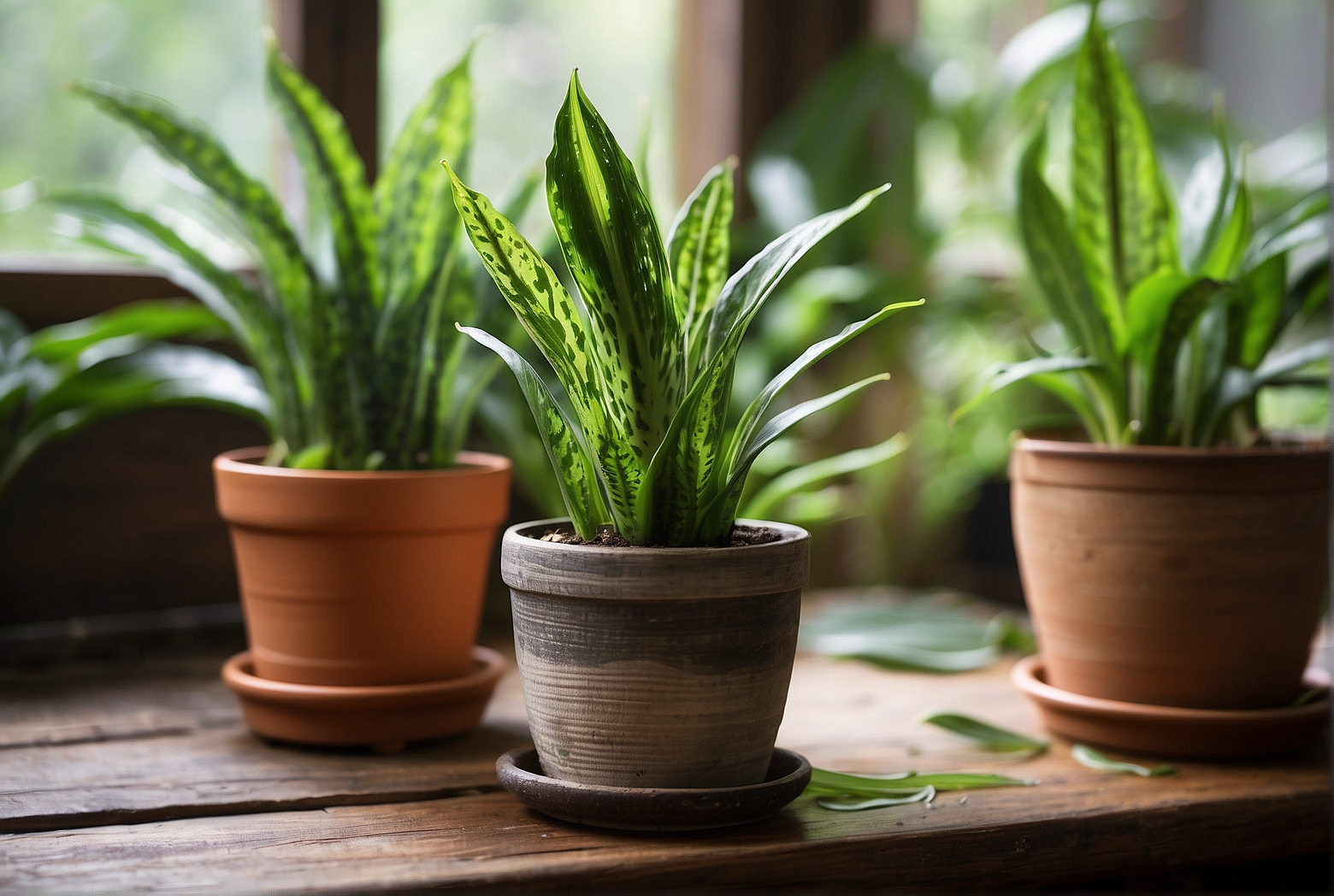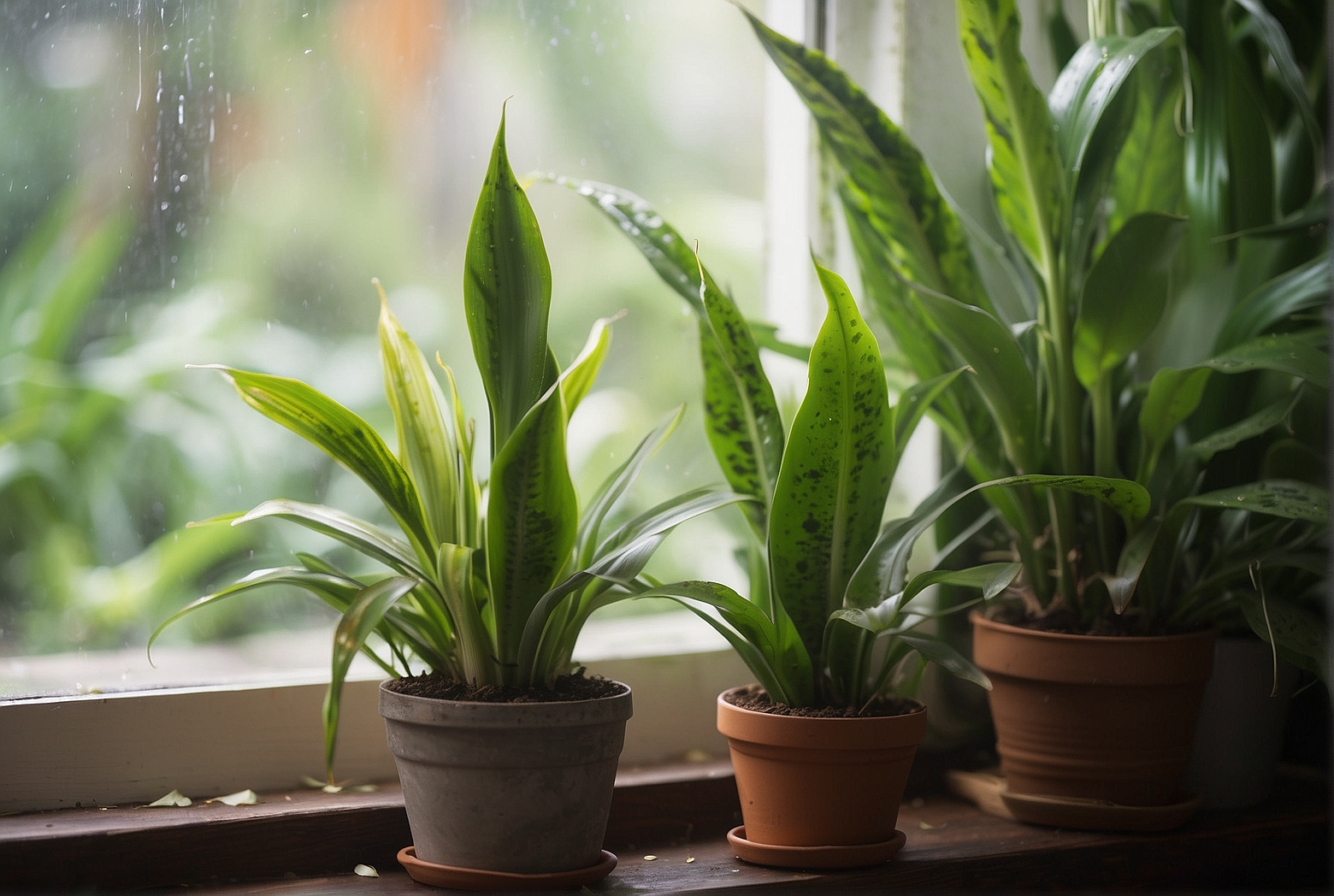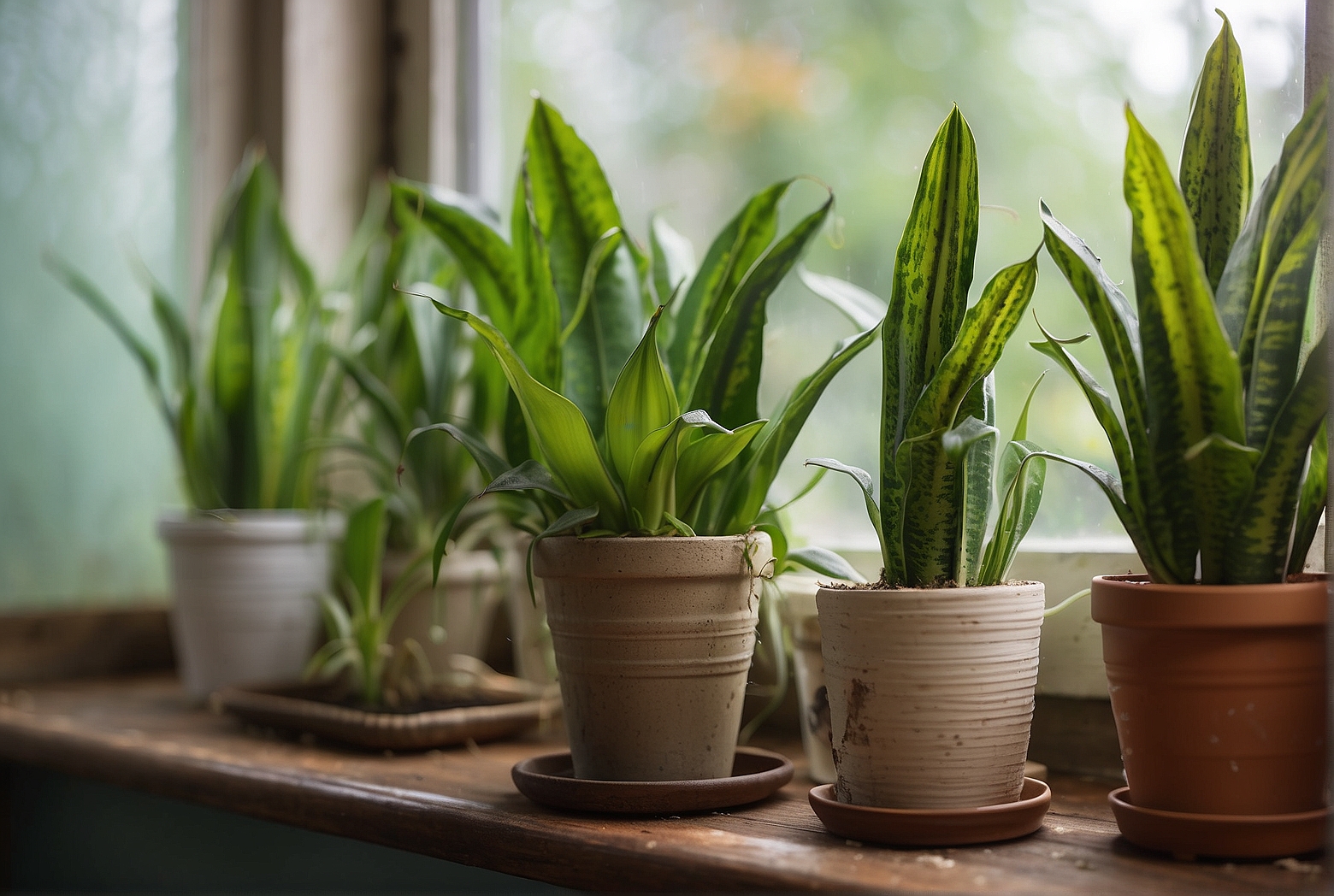Last Updated on April 15, 2024 by Tony Manhart
Snake plants, also known as Sansevieria, are beloved houseplants due to their hardy nature and ability to thrive in almost any condition. While they generally prefer drier environments, humidity can play a significant role in the overall well-being of these popular green companions. Understanding how humidity affects snake plants is essential for their care and maintenance. In this article, we will explore the impact of humidity on snake plants, providing insights and tips on how to create an optimal environment for these resilient beauties to flourish. Whether you’re a seasoned plant enthusiast or a beginner, this article will equip you with the knowledge to ensure your snake plants thrive in any humidity level.
What is a Snake Plant?
Snake plant, also known as Sansevieria or Mother-in-law’s tongue, is a popular indoor plant characterized by its long, upright leaves. With its unique, sword-like appearance and low maintenance requirements, snake plants have become a favorite among plant enthusiasts. These plants are native to West Africa and are known for their ability to tolerate a wide range of conditions. In addition to their aesthetic appeal, snake plants offer numerous benefits, including improving air quality and adding a touch of greenery to any space.
Optimal Humidity for Snake Plants
Native Habitat
To understand the ideal humidity for snake plants, it is important to consider their native habitat. Snake plants naturally grow in tropical regions of West Africa, where humidity levels are generally high. These plants have adapted to thrive in such environments, making them well-suited for indoor conditions where humidity can be controlled.
Ideal Range
While snake plants can tolerate a range of humidity levels, they generally prefer humidity levels between 40% and 60%. This moderate humidity range mimics the conditions found in their native habitat and promotes healthy growth and development. However, snake plants are known for their ability to adapt to different environments, so they can also tolerate higher or lower humidity levels to some extent.

Effects of High Humidity
Exposure to high humidity levels can have both positive and negative effects on snake plants. On one hand, increased humidity can help prevent the leaves from drying out and promote overall plant hydration. However, excessive humidity can also create an ideal environment for the development of fungal infections and root rot. It is essential to strike a balance to prevent these issues.
Effects of Low Humidity
Low humidity can be detrimental to snake plants, especially if they are constantly exposed to dry air. In such conditions, snake plants may experience water stress and may not be able to transpire efficiently. This can lead to wilted leaves, increased pest activity, and slow growth. It is important to provide adequate moisture to prevent these issues and maintain optimal humidity levels.
How Humidity Impacts Snake Plants
Transpiration
Humidity plays a crucial role in a plant’s transpiration process, which is the movement of water from the roots to the leaves and the subsequent release of water vapor through small openings called stomata. With higher humidity levels, the rate of transpiration may decrease as there is already a significant amount of moisture in the air. Conversely, low humidity can lead to increased transpiration as the plant tries to compensate for the lack of moisture in the environment.
Watering Requirements
The humidity level in your plant’s environment directly affects its watering requirements. In high humidity conditions, snake plants may require less frequent watering as the moisture in the air helps keep the soil moist. However, in low humidity conditions, the soil may dry out more quickly, leading to a need for more frequent watering. It is crucial to monitor the soil moisture levels and adjust watering accordingly to prevent over or underwatering.

Growth and Development
Optimal humidity plays a vital role in the growth and development of snake plants. Moderate humidity levels provide the ideal moisture balance for these plants, ensuring healthy leaf expansion and overall growth. In high humidity, snake plants may grow well initially, but without proper airflow, there is a risk of fungal infections and root rot. On the other hand, low humidity can hinder growth and result in stunted plants.
Disease and Pest Susceptibility
Humidity levels also impact a plant’s susceptibility to diseases and pests. High humidity can create a favorable environment for fungal pathogens, making snake plants more vulnerable to diseases such as leaf spot and root rot. It is essential to maintain proper airflow and humidity levels to minimize the risk of fungal infections. Additionally, low humidity can weaken the plant’s defenses, making it more susceptible to pests like spider mites and mealybugs.
Signs of High Humidity Stress
Wilting Leaves
One of the signs of high humidity stress in snake plants is wilting leaves. While it may seem contradictory, wilting can occur when the plant’s roots are exposed to excessive moisture for extended periods. The excess moisture prevents the roots from absorbing oxygen, resulting in wilting leaves as the plant cannot properly take up water.
Yellowing or Browning
Excessive humidity can cause snake plant leaves to yellow or develop brown spots. This discoloration is often an indication of fungal infections or bacterial leaf spot, which thrive in moist conditions. If left untreated, these issues can become severe and potentially damage the entire plant.
Root Rot
Root rot is a common problem in snake plants grown in high humidity environments. Excess moisture in the soil results in poor drainage, leading to root rot. Signs of root rot include mushy, discolored roots and a foul odor. If not addressed promptly, root rot can be fatal to the plant.
Fungal Infections
High humidity can create a conducive environment for fungal infections in snake plants. Signs of fungal infections include discolored or disfigured leaves, the presence of mold or mildew, and a general decline in the plant’s overall health. Proper airflow and managing humidity levels can help prevent and mitigate fungal infections.
Signs of Low Humidity Stress
Dry and Crispy Leaves
When snake plants are exposed to low humidity levels, their leaves can become dry and crispy. The lack of moisture in the air causes the plant to lose water through transpiration faster than it can take it up from the roots, resulting in desiccation of the leaves. This can lead to a dull and brittle appearance.
Leaf Tip Browning
Low humidity can cause the tips of snake plant leaves to turn brown, a condition known as leaf tip burn. The lack of moisture causes the leaf tips to dry out, resulting in their browning and eventual death. While a small amount of browning is normal, excessive leaf tip browning indicates low humidity stress.
Slow Growth
In low humidity conditions, snake plants may experience slower growth rates. The lack of moisture hampers the plant’s ability to take up water and nutrients, leading to stunted growth. If the humidity remains consistently low, it can hinder the plant’s overall development.
Increased Pest Activity
Low humidity weakens the plant’s natural defenses, making it more susceptible to pests. Pests like spider mites and mealybugs thrive in dry conditions and can rapidly infest snake plants. Increased pest activity, including the presence of visible pests or their webs, is a clear indication of low humidity stress.
Managing Humidity for Snake Plants
Natural Methods
There are several natural methods to manage humidity levels for snake plants. Placing a tray filled with water or pebbles near the plants can help increase humidity through evaporation. Grouping plants together also creates a microclimate with higher humidity levels. Additionally, avoiding drafts and positioning plants away from air conditioning vents can help maintain a stable humidity level.
Using a Humidifier
A humidifier is an effective tool to provide consistent and controlled humidity levels for snake plants. It releases moisture into the air, raising humidity levels to the desired range. Using a humidifier in the same room as the plants can help create an environment similar to their native habitat.
Grouping Plants
Grouping snake plants together can create a microclimate with higher humidity levels. As plants transpire, they release moisture into the air, increasing the overall humidity within the group. This method is particularly useful in drier indoor environments.
Misting
Misting snake plants with water can temporarily increase humidity levels around the foliage. However, it is important not to overdo it, as excessive misting can lead to waterlogging and increase the risk of fungal infections. Misting once or twice a day is generally sufficient to provide a short-term boost in humidity.
Tips to Maintain Humidity Levels
Avoid Overwatering
While maintaining humidity is important, it is essential to avoid overwatering snake plants. Overwatering can lead to root rot in high humidity conditions, further stressing the plant. It is crucial to find a balance between providing adequate moisture and not saturating the soil excessively.
Proper Drainage
Ensuring proper drainage is essential to maintain optimal humidity levels. Snake plants should be potted in well-draining soil and containers with drainage holes. This helps excess water to drain out, preventing waterlogged conditions that can lead to high humidity stress.
Placing Pebbles or Trays of Water
Placing pebbles or trays filled with water near snake plants can increase humidity through evaporation. The evaporating water adds moisture to the surrounding air, raising humidity levels naturally. It is important to ensure that the plants are not directly in contact with the water to prevent root rot.
Avoid Drafts and Air Conditioning
Drafts and air conditioning can lead to rapid moisture loss, resulting in low humidity conditions for snake plants. To maintain optimal humidity levels, it is advisable to keep the plants away from windows, doors, or air conditioning vents. Positioning the plants in a stable environment will help prevent excessive drying of the air.
Common Mistakes with Snake Plant Humidity
Neglecting Humidity Levels
One common mistake is neglecting to monitor and adjust humidity levels for snake plants. Failure to consider their humidity requirements can lead to stress, poor growth, and increased susceptibility to diseases and pests. Regularly assessing and managing humidity levels is essential for the overall health and well-being of snake plants.
Over or Underusing Humidifiers
Using a humidifier can be beneficial, but it is important to strike a balance. Overusing a humidifier can create excessively high humidity levels, promoting fungal infections and root rot. Likewise, underusing a humidifier may not provide sufficient moisture, leading to low humidity stress. Regularly checking humidity levels and adjusting the humidifier settings accordingly is crucial.
Ignoring Signs of Stress
It is important not to ignore signs of stress in snake plants. Both high and low humidity stresses manifest in visible symptoms, such as wilting, discoloration, and slow growth. Promptly addressing these signs by adjusting humidity levels and implementing necessary measures can prevent further damage and promote plant recovery.
Inconsistent Humidity
Maintaining consistent humidity levels is vital for snake plants’ health and well-being. Fluctuating humidity conditions can stress the plants and compromise their overall growth and development. Regularly monitoring and adjusting environmental conditions to maintain a stable humidity range will benefit the plants in the long run.
Conclusion
The humidity levels in your snake plant’s environment play a crucial role in its overall health and vitality. While snake plants are adaptable to different conditions, they prefer moderate humidity levels that resemble their native habitat. Providing optimal humidity promotes healthy growth and development, while excessive or low humidity can lead to stress, diseases, and pest infestations. By understanding the signs of humidity stress and implementing appropriate measures, such as natural methods, humidifiers, and proper watering, you can ensure your snake plant thrives in an environment that mimics its ideal conditions. Remember to monitor humidity levels regularly, avoid common mistakes, and find the right balance to create a thriving and beautiful indoor garden.
Tony Manhart is a passionate gardener who has been tending to gardens for over 20 years. He takes pride in creating beautiful outdoor spaces with plants, trees, and shrubs that can thrive in any environment. He loves to share his knowledge with others and has taught classes on gardening basics and advanced techniques. He is committed to sustainability, using natural and organic methods to create and maintain gardens. He also works with local organizations to create green spaces for communities. When he’s not gardening, Tony enjoys hiking, reading, and spending time with his family.


